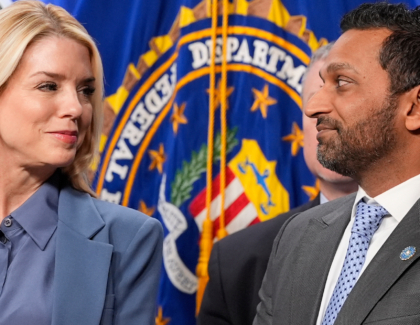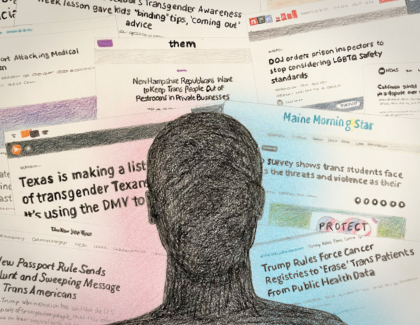Sign up for the daily CJR newsletter.
Americans think about elections wrong; they aren’t only about tallying votes to declare a winner. Elections in a democracy are just as much about convincing the loser that he or she actually lost—and that the process was free, fair, and secure enough that the loser can accept the result as legitimate.
Now, only weeks before Election Day, there’s a growing realization that the complexity of this year’s electoral landscape—from pandemic-related social distancing and poll-staffing disruptions to mail-in voting and a combustible year of public protests—likely means that some of the presidential campaign’s biggest drama might very well play out in the hours and days after Election Day.
According to a new survey by Pew, voters across both parties say it is important to know who won the election within a day or two of November 3. Far fewer are confident that this will happen.
The possibility of a long gap before the winner becomes clear—and the very real fear that the apparent loser of the November 3 vote and his supporters will declare that the results aren’t legitimate—has forced news organizations to think deeply in advance about how they should responsibly report and frame the unofficial tallies they’ll gather on election night.
After a lengthy series of election-related conversations hosted by the Aspen Institute this summer and fall—including discussions with election administrators, disinformation researchers, legal scholars, and representatives from news organizations and tech companies—there are ten clear principles media organizations should keep in mind as they plan their election night coverage:
-
- Problems are not failures. There will be actors trying to convince the public that every small error is evidence of a rigged system. In fact, individual examples of mishaps, misconduct, or even malfeasance are not evidence that the electoral system is incapable of providing a legitimate result. Normal stuff goes wrong on Election Day; there are machines that don’t work, polling places that lose power or open late, voter rolls that get misdelivered. That’s not unusual. There are upwards of 230,000 polling places in the US, so even in an election during which 99.9 percent of precincts operate perfectly, there will be hundreds of problems. Social distancing efforts may make even relatively short, fast-moving lines appear unmanageable, stretching hundreds of feet down the block; in such a situation, news organizations should avoid images or descriptions that might mislead voters to believe there are problems where there aren’t. Avoid suggestions that “routine” mishaps may be nefarious or criminal; likewise, do not suggest that “regular” problems may lead to election results that will be fraudulent or invalid.
At the same time, there are already signs of trouble at the polls—and systemic problems should be reported as such. Certain jurisdictions have a documented history of voter suppression and obstructing minority voters. Today, states are cutting back on ballot access and there are hours-long lines for early voting appearing in places like Georgia. In California, the state attorney general has issued cease-and-desist letters to the California Republican Party after it set up unofficial ballot dropboxes. It’s critical during the coming weeks that news organizations cover and pay attention to these problems and patterns, particularly where there are disparate impacts. (In 2017, Stephen Pettigrew found that nonwhite voters are seven times more likely to wait over an hour to vote, compared to white voters.) This year will be the first time since the 1990s that the Republican Party will not be under a federal consent decree limiting its ability to conduct so-called “ballot security” efforts, like challenging the ability of individual voters to participate on Election Day, and President Trump is calling for his supporters to “self-monitor” polling places. There is the possibility that there will be widespread problems on Election Day that are both important to cover and yet, taken together, still do not rise to the level of invalidating or delegitimizing the election results. It is critical that news media draw distinguishing lines with precision and care. - Know the calendar. The public has been conditioned to expect a winner within hours of the polls closing, but the numbers collected on election night are not necessarily decisive. There are three dates that matter: (a) each state’s own individual deadline for certifying the vote count, which is usually two to three weeks after election day; (b) the federal so-called “safe harbor” date on December 8, whereby a state has to settle all post-election legal challenges; and, the most important, (c) the national December 14 meeting of the Electoral College. Voters need to understand that just because a state takes a week or two—or longer—to finalize results, that doesn’t jeopardize the integrity of the system.
- Manage expectations using careful language. The news media can unintentionally mislead the audience about the media’s role. Be precise. The media “projects” winners; it should not “declare” a winner, “call” a race, or “count” a vote. In reporting tallies, news organizations should explain what they know, how they know it, and what they don’t know yet. Explain, for instance, the difference between pre-election “processing” of absentee/mail-in ballots and pre-election “counting” of votes, and how those vary by state.
- Explain why this year will be different. Many states are going to struggle to understand their “denominator”—that it is, how many total ballots have been cast. The denominator is critical for media organizations to project a winner because it allows them to understand how many ballots are left to count. In past years, absentee or mail-in ballots in many states accounted for a small fraction of the overall total (circa 3 to 5 percent), whereas in this year’s election, states might see that number soar to 30 percent or more, making it much more difficult to know early on election night what the final results might be.
- Prepare for a possible shift as ballots are counted. Some races (and entire states) that look close on election night might not end up close at all, and what looks like an early lead might evaporate. None of these shifts should be considered prima facie evidence of fraud or misconduct. They are instead a function of precincts reporting at varying times, smaller jurisdictions reporting before larger cities (or vice versa), machine-based precincts counting more quickly than paper-based precincts, absentee ballots being counted separately from in-person ballots, or any of a million other combinations of election administrators working thoroughly towards orderly results. Even in a regular, non-pandemic election, it is normal and expected that between six million and eight million more votes nationwide might trickle in as the week of Election Day unfolds and votes are tallied and finalized.
- Provide vote counts and election numbers in context. The way tallies are presented or reported can unintentionally undermine trust in the legitimacy of the election—especially this year, when record levels of mail-in votes will add complexity. Frame both results and any delays precisely. For example, avoid “precincts left to report”; instead, refer to “votes that have been received” in order to capture precincts that may report multiple sets of results—in-person v. absentee. Thus vote totals might shift well after “100 percent of precincts are reporting.” Similarly, when highlighting areas of trouble, contested ballots, or potential problems, make sure to give the full picture. In Georgia, many stories this fall noted that there were 1,000 people who “double voted” in this year’s primary, but failed to provide the appropriate context: those 1,000 “double voters” represented just .09 percent of the roughly one million total votes; the double-votes were caught by the very mechanisms in place to prevent such instances; and, as far as investigators have found, only one of the “double voters” was known to have malign intentions.
- Results aren’t “late” simply because the winner isn’t known on election night. States have until December 8 to report official counts to the federal government. There is no reason to inherently distrust the vote-counting speed. In fact, voters should expect that counts will not be available on the evening of November 3 or even potentially on November 4. If the election is a blowout, we’ll know that Tuesday night or Wednesday—but if it’s close, it’s entirely appropriate, normal, and lawful for the counting to continue for days or weeks. What you think is “slow” actually isn’t—it’s a system functioning as expected to deliver a legitimate result.
- Don’t parrot premature claims of victory. There will be a perverse incentive this year for candidates to rush to declare victory, enabling themselves to then claim irregularities or problems are the election being “stolen.” Be wary of any such declarations that arrive before results become clear, and equivocate when reporting on outlandish claims that aren’t backed up by evidence. Don’t allow candidates to inject uncertainty or cast unfounded aspersions about the legitimacy of results simply by being first out of the gate to declare victory. And don’t frame premature declarations as “both sides” disagreements—e.g., “Candidate X says he’s won, while his opponent says he hasn’t.”
- Hold officials accountable while building public confidence in the system writ large. How reporters frame and report on controversies, problems, and candidate complaints will help determine public confidence in the integrity of the outcome. The news media provide transparency and accountability about problems as they arise without unduly indicting the entire system. For instance, news organizations should rightly question and report on the Post Office’s challenges without undermining the legitimacy of vote-by-mail in general. Don’t repeat a candidate’s unfounded declarations that vote-by-mail, ballot drop boxes, or any other widely used system is inherently insecure or subject to fraud. Mass vote fraud, for all intents and purposes, is logistically impossible; even meaningful localized voter fraud is vanishingly rare and historically improbable. At the same time, be mindful that Black voters and other underrepresented groups have been historically disenfranchised via voter ID laws, longer wait times, and restrictions that bar people with felony convictions from voting.
Remember, too, to highlight that “problems” often point to solutions: While it was correct and appropriate to question the oddity of the Justice Department’s hurried, strange recent press release about nine irregular ballots in Pennsylvania, that incident should have also been framed not as a systemic failure but as that system working—an irregularity in voting was discovered, investigated, and remediated, just as the electoral system intends. Similarly, in California, after the state GOP erected the unofficial dropboxes, the state attorney general moved to block them and secure any ballots already deposited in them. The potential for voter fraud was minimized by the system, as intended. - Be prepared. Given the unprecedented challenges of this election, ground yourself in data, history, and constitutional and electoral law. Well before Election Day, news organizations should work to vet and line up a host of credible experts and analysts beyond the “normal” pundits. For key states, know who the secretaries of state and election administrators are. Have constitutional and electoral law experts on standby. Have reporters and producers on the ground in key districts or precincts, particularly areas with minority and under-represented communities that have historically struggled with disenfranchisement and voting problems. Have historic graphics and numbers ready to help explain to viewers, readers, and users how vote counts normally shift. Gather how many “absentee” or mail-in ballots states and jurisdictions have been sent out or returned, to help understand how many ballots might be outstanding and still need to be counted. Have historians and scholars ready to talk about previous election controversies, and to provide legal and historical perspectives about possible street protests, voter suppression, and so-called “ballot security” programs. (For that matter, have someone ready to talk about laws prohibiting military actions at polling places and the Department of Defense’s civil support directive.) Run your own table-tops, game-out different scenarios and how you’d cover them, and make sure in advance you’ve thought through the hard questions about democracy you’re likely to face this November.
- Problems are not failures. There will be actors trying to convince the public that every small error is evidence of a rigged system. In fact, individual examples of mishaps, misconduct, or even malfeasance are not evidence that the electoral system is incapable of providing a legitimate result. Normal stuff goes wrong on Election Day; there are machines that don’t work, polling places that lose power or open late, voter rolls that get misdelivered. That’s not unusual. There are upwards of 230,000 polling places in the US, so even in an election during which 99.9 percent of precincts operate perfectly, there will be hundreds of problems. Social distancing efforts may make even relatively short, fast-moving lines appear unmanageable, stretching hundreds of feet down the block; in such a situation, news organizations should avoid images or descriptions that might mislead voters to believe there are problems where there aren’t. Avoid suggestions that “routine” mishaps may be nefarious or criminal; likewise, do not suggest that “regular” problems may lead to election results that will be fraudulent or invalid.
THE KICKER: E. Jean Carroll puts Trump’s survivors in charge
Has America ever needed a media defender more than now? Help us by joining CJR today.







